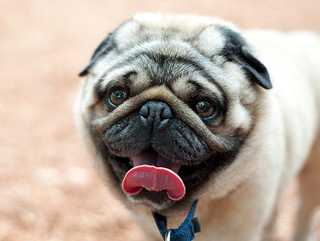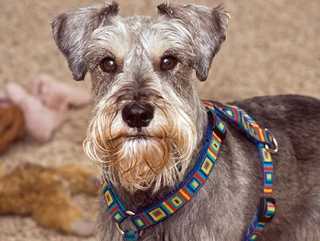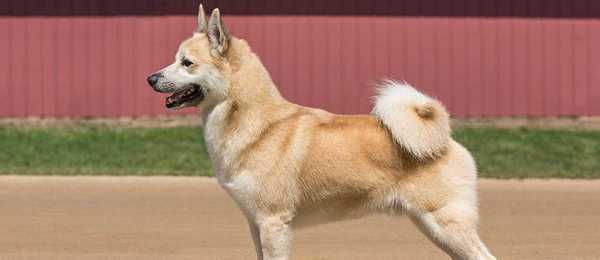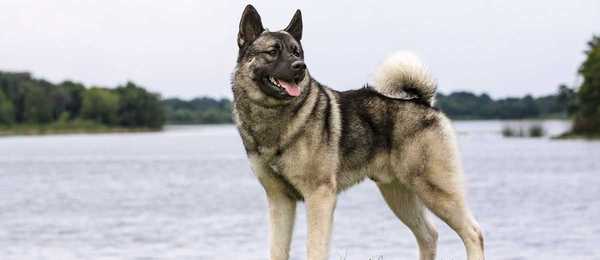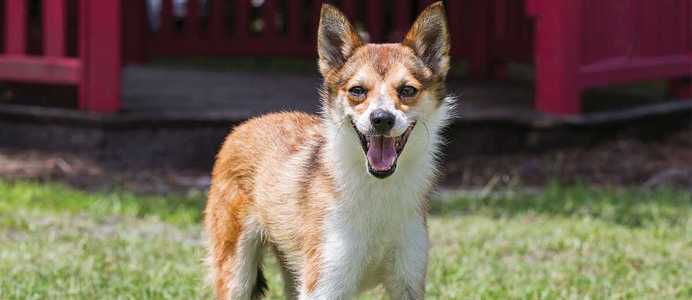
Traits and Characteristics
type
weight
height
family
The Lundehund uses strong extra toes to help grasp rocky cliffs and to dig under boulders. This dog is flexible and can bend the head backward so the top of the head touches the back. The Lundehund can also extend the forelegs straight out to either side, which results in a peculiar rotary movement when the dog trots. This dog can close the ear openings to block out debris and has elongated rear foot pads for better traction. The breed also has two fewer teeth than other dogs. Otherwise, the general conformation is typically spitz. The Lundehind is neither coarse nor heavy and is instead athletic and agile, with a medium-length double coat that has a harsh outer coat with soft underfur.
Ready to see what dogs fit you best? Take our short quiz to find out!
Energy Level
Exercise Requirements
Playfulness
Affection Level
Friendliness to Dogs
Friendliness to Other Pets
Friendliness to Strangers
Watchfulness
Ease of Training
Grooming Requirements
Heat Sensitivity
Vocality
Disclaimer: While the characteristics mentioned here may frequently represent this breed, dogs are individuals whose personalities and appearances will vary. Please consult the adoption organization for details on a specific pet.
Temperament
Lundehunds are more primitive in their behavior than many breeds, very inquisitive and independent. They are free thinkers, which can be challenging when training. They can climb and tunnel, so few things are out of their reach. They have a strong prey drive but can get along with other pets if raised with them. They are very alert and may bark a lot. Most tend to be reserved with strangers but not aggressive. They normally protect by barking rather than biting. If not socialized extensively as puppies, they can be sound-sensitive or shy.
Upkeep
Lundehunds are busy dogs, climbing on things and checking out crannies. They need a good walk or vigorous play session every day. They particularly enjoy the chance to explore new places or any activity that engages their active minds. Some can be difficult to housetrain. Coat care consists of a weekly brushing; more often when shedding. A dog with symptomatic Lundehund syndrome can present feeding challenges and needs a special diet.
Health
- Major concerns: Lundehund gastroenteropathy syndrome
- Minor concerns: none
- Occasionally seen: none
- Suggested tests: none
- Life span: 8-12 years Note: Every Lundehund probably has Lundehund syndrome, a collection of potentially serious gastrointestinal problems, though some show no signs.
History
It’s the world’s most flexible dog and the only dog to have six toes on each foot. These traits have helped the Lundehund perform a dangerous job for hundreds of years. Lundehund means Puffin Dog in Norwegian. The Lundehund comes from Norway’s Lofoten Islands, where puffin birds (“lundes”) nest in narrow caves and tunnels in the islands’ cliffs. Only the Lundehund could climb the cliffs and squeeze deep into the twisting tunnels to catch these birds when they were hunted. Distemper, a dog tax, and crosses with other breeds rendered the pure Lundehund almost extinct. In the 1960s, interest in the breed grew with a breed club, and numbers grew under the guidance of a geneticist who devised a breeding program to repopulate the breed. The first Lundehund came to Canada in 1960 and to America in 1987. The Norwegian Lundehund became a regular AKC breed in 2010.
